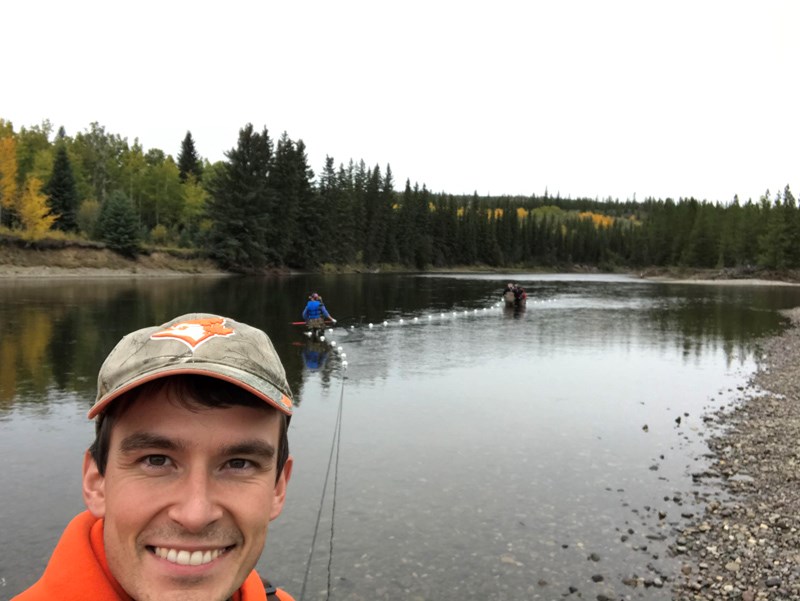Prince George volunteers at Spruce City Wildlife Association (SCWA) are making a difference toward local conservation.
The Spruce City Wildlife Association hatchery is currently the only volunteer-run stock rebuilding organization for threatened and endangered stocks in B.C. and is looking to encourage more members and consistent government funding.
The dedicated group has successfully designed, funded and implemented the technology to handle up to 120,000 chinook salmon fry.
“We need long term consistent funding to make sure monitoring is better,” said Dustin Snyder, now SCWA president, when asked what he would urge given five minutes with a politician.
“It costs millions of dollars to bring back a species at risk; ongoing monitoring from stable funding could save British Columbians millions of dollars. It is much cheaper to maintain something than to try to rebuild it.”
When Snyder and a small group of interested people first found out that Chinook salmon in the Upper Fraser were classified as endangered by the Committee on the Status of Endangered Wildlife in Canada (COSEWIC), they were outraged and acted.
There was no working hatchery in the Upper Fraser at that time, so they started to advocate for fishery restrictions, while also renovating the old club hatchery and regrowing the program.
Unlike coastal programs, they had to develop a new path because the salmon science from streams and rivers in northern B.C. is outdated: “The science is from the mid 80s as best,” says Snyder.
They figured out a lot for themselves – science, technology and funding. The lack of recent science meant the volunteers had to scout new brood capture sites themselves with the local Department of Fishery (DFO) community advisor.
On top of this, the Big Bar slide cut the endangered stock off at the kneecaps – some rivers that should have had 300-400 fish had less than five.
They wrestled with technological challenges. Freezing temperatures meant they could not just run natural water over the eggs. Instead, they had to install chillers to cool well water (well water is too warm, so the eggs hatch too early).
Then they had to meet DFO technological requirements, like a generator and multiple alarm systems to detect changes in flow and temperature; the endangered brood stock from their hatchery can make up five per cent of the total run that year, so a mistake can cost the population dearly.
The small volunteer team also had to find the money. They got $240,000 from provincial grants, Rio Tinto gave them $99 000 and Upper Fraser Fisheries Conservation Alliance (UFFCA) gave them $160,000. With this money, they took the hatchery from a 1980s facility “held together by duct tape” to a state-of-the-art facility more advanced than some DFO hatcheries.
All brood capture happens in 1-month. Volunteers easily drive 600 to 1000 km during that month (3.5 hours each way to each river for 2-3 weekends). A few years ago, there were only a few people doing these drives for brood stock, but now there are 10-12 people every weekend.
“The advantage of club membership is base-level involvement and opportunity to give back,” said Snyder. “Sometimes people want to get their boots muddy, handle big fish in the off season, and get outside.”
As a volunteer with SCWA, Lisa O'Neill has trained side-by-side with a Department of Fisheries vet learning the biological aspects of taking samples for health tracking.
She has also trained with Canada Cryogenics, dealing with freezing/thawing of milt and using frozen milt to fertilize the eggs.
"To anyone who is feeling the blues, volunteering for wildlife conservation with your local club is incredibly rewarding. It refuels me every week and has been a super positive, life-changing experience!" said O'Neill.
“I never thought in my wildest dreams I would get so exhilarated by salmon.”
The SCWA and Prince George community volunteers also work with the Conservation Officer Service and the RCMP on backcountry clean ups, recently winning an award from the Conservation Officer Service and an Environmental Leadership Award for their hatchery and clean up.



